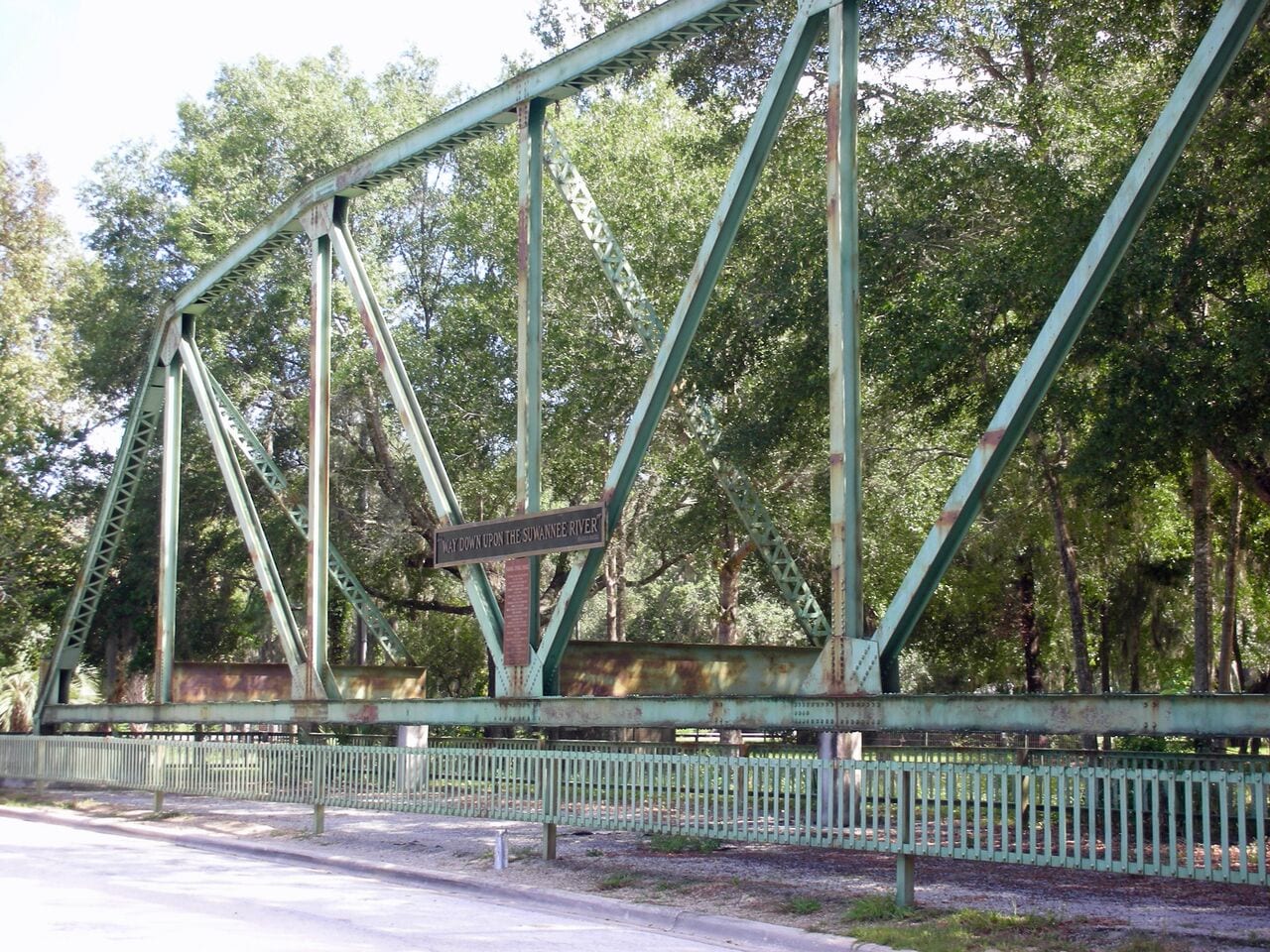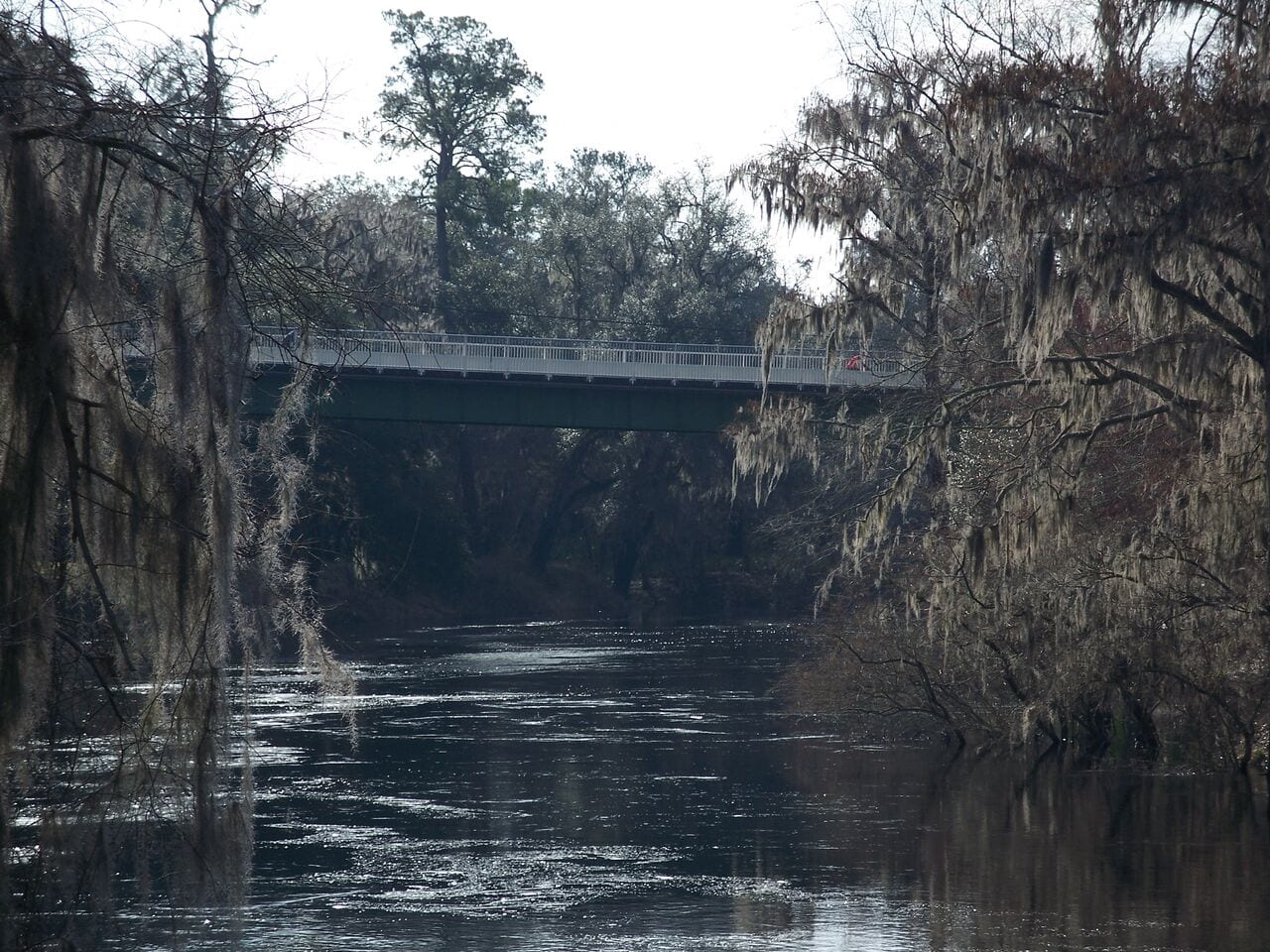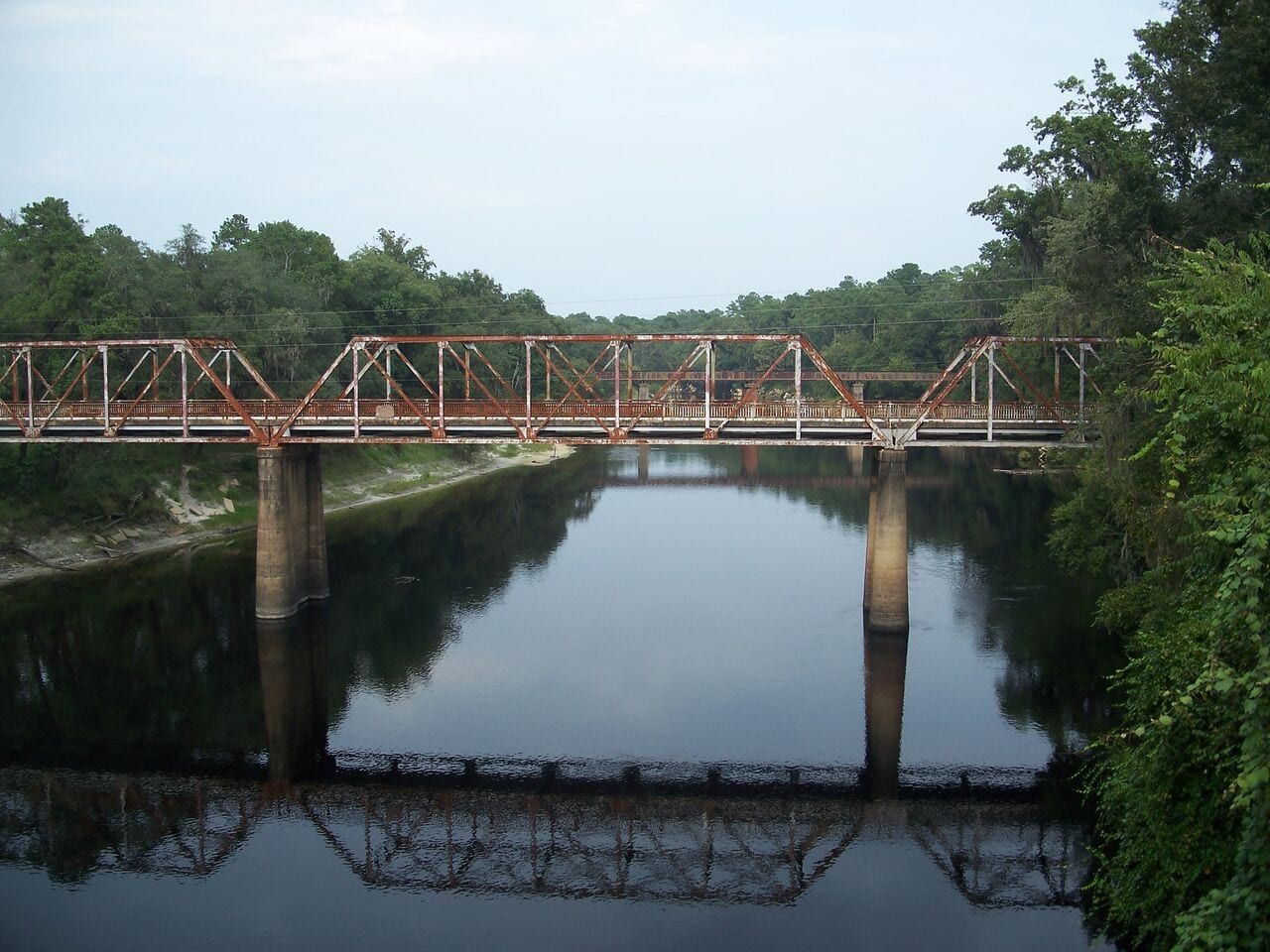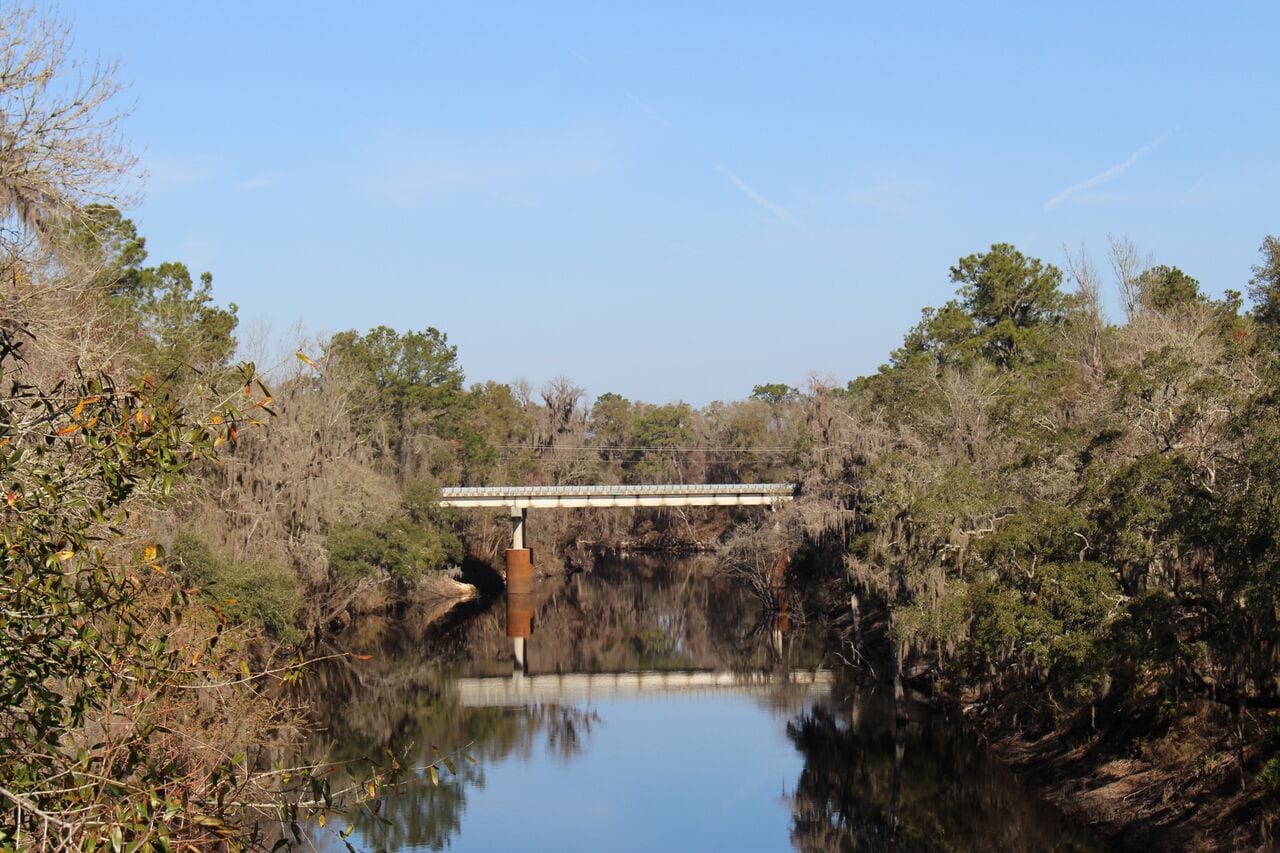1 The Hillman Bridge next to a railroad bridge
2 The picturesque Highway 129 Bridge
3 The bridge at Bell with its water marks
4 A modern, high bridge
5 The Hal W. Adams Bridge
6 The bridge span in Fanning Springs Park
Florida Waterways
“Bridges over the Suwannee River”
By Kevin McCarthy
When I boated the length of the Suwannee River with my friend and alligator hunter, Cary Crutchfield, eight years ago in preparation for writing a guidebook to the river, I had a chance to see the different kinds of bridges that spanned the waterway. When we saw cars passing over the bridges, we’d wave to the passengers, some of whom might have been wishing they were on the river instead of in a confined car.
About ten major bridges cross the river, although there used to be more, and some of the bridges are used only for railroads, and others for pedestrians. Sometimes, we would see a railroad trestle bridge next to a highway bridge, each testifying to an historic era of the waterway. For example, the very old abandoned railroad bridge in the photo here, is right next to the Hillman Bridge, where the original U.S. 90 crossed the river.
Often, when we rounded a bend in the river, we would come upon a picturesque view of a bridge, for example the U.S.129 Bridge, joining Hamilton and Suwannee counties.
One could often make out the high level of water marks on the bridges from some of the past flooding, that the river had experienced. The bridge at Bell showed tannin-colored marks from past floods. Some of the modern bridges, like the State Road 136 Bridge over the river at White Springs, are very high, in order to take into account rising flood waters.
The bridge that carries I-75 over the river has a sign entitled “Historic Suwannee River” with the first line of sheet music from Stephen Foster’s “Old Folks at Home” song.
Some of the newer bridges, like the Hal W. Adams Bridge near Luraville, at the border between Suwannee and Lafayette counties, look very grandiose.
The stand-alone bridge span in Fanning Springs State Park, near US 19 at the river, has a plaque on it that gives a history of the bridge there, noting that the structure was first built in 1934 and named the Benjamin Chaires Bridge, after a local pioneer settler of Dixie County. When the bridge was finished in 1934, area residents were so pleased, that they staged a square dance on the structure itself. Workers later replaced that early bridge with a modern one, and placed the original Chaires Bridge in the park near the river.
Bridges serve a valuable service, of course, in allowing people to cross from one side of the waterway to the other, but they can also be inspiring to look at from the level of the river.
Finally, on the subject of this, essay I am reminded of a quote by the great Isaac Newton: “We build too many walls and not enough bridges.”
Kevin McCarthy, the author of “Suwannee River Guidebook” (2009 – available at amazon.com), can be reached at ceyhankevin@gmail.com.





